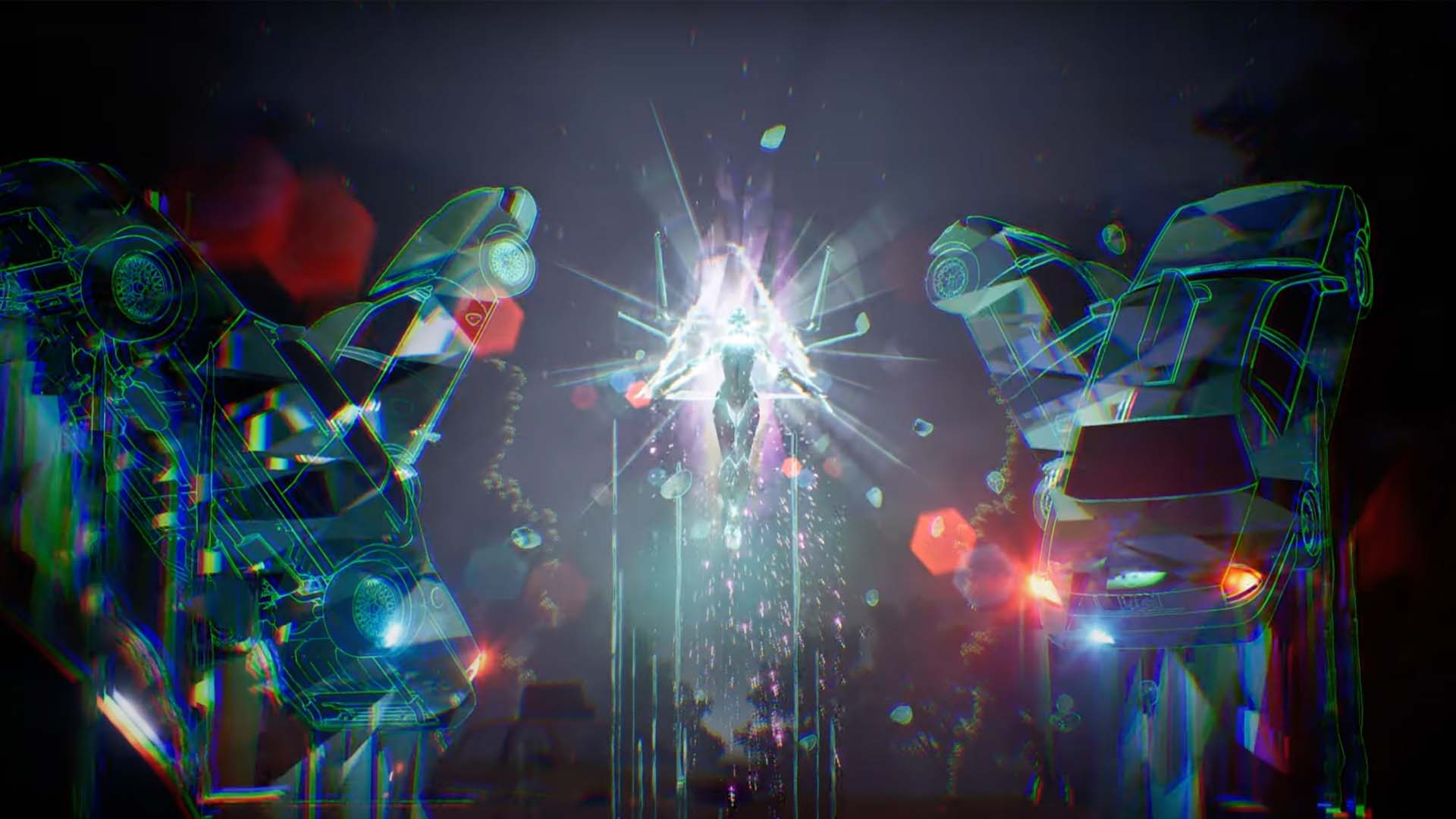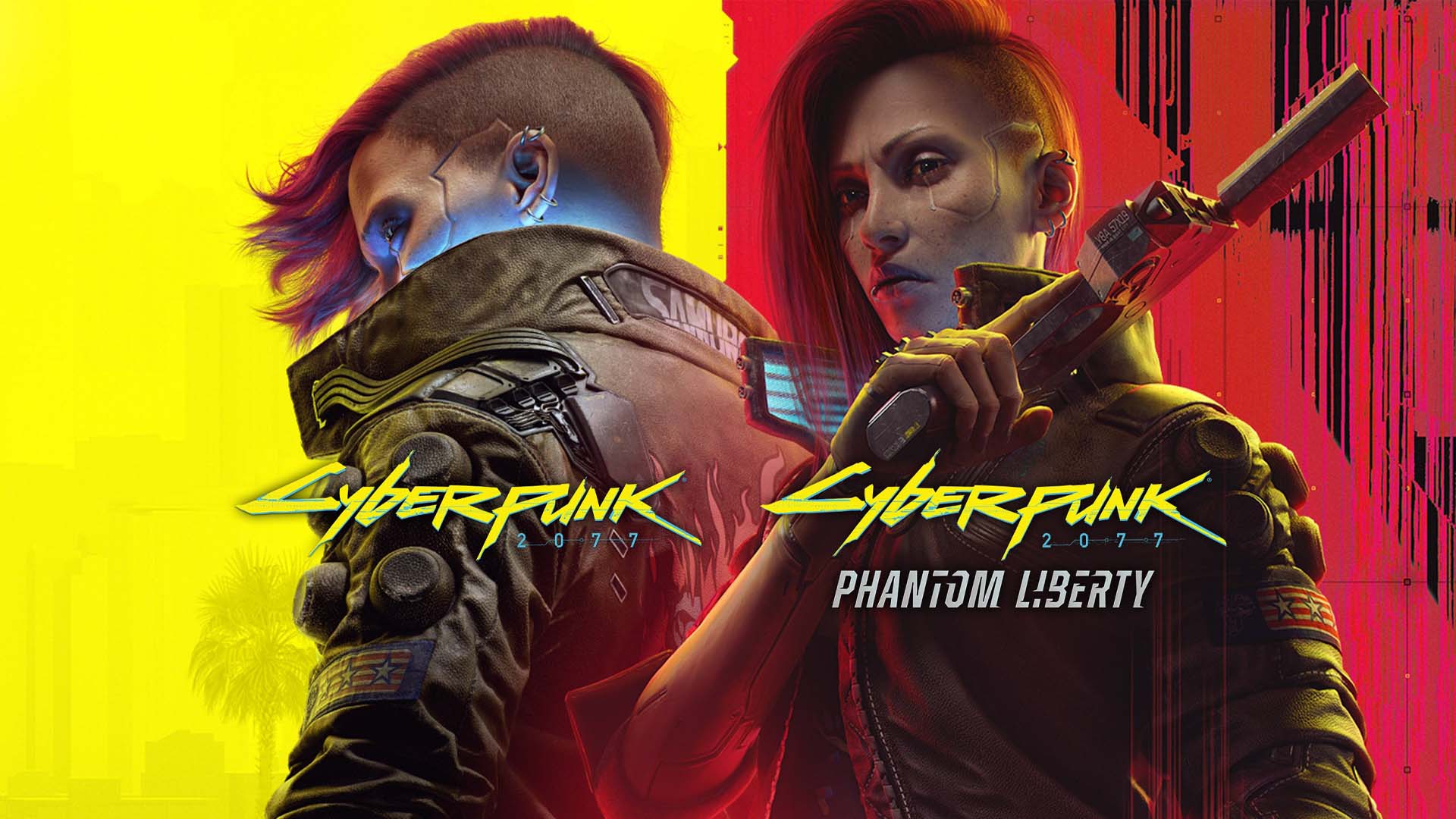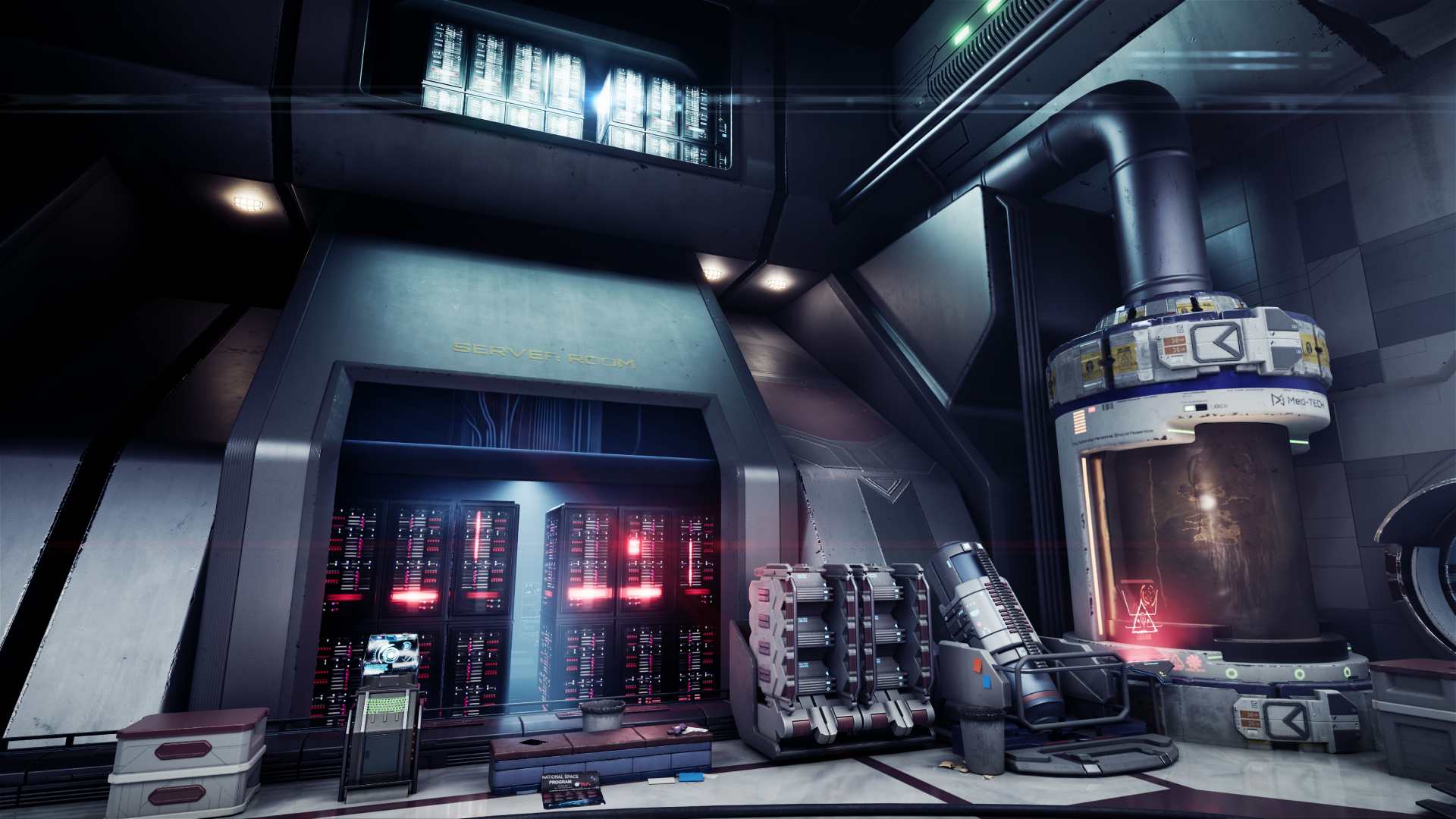AAA games are one of the cornerstones of the entire gaming industry. Big-name titles with large budgets and teams behind them tend to drive a significant portion of the gaming industry’s success, and this trend doesn’t look to be slowing down any time soon.
At Magic Media, we’ve extensive experience working with diverse clients on their AAA games for numerous platforms. We’ve provided various services across development, art, and other disciplines to help AAA games reach a high-quality state before release. Considering our vast knowledge, we wanted to compile an all-in-one guide for AAA games, defining what they are, their hallmark features, and other key aspects.
Introduction to AAA Games
What are AAA Games?
AAA games can be defined as games released as part of a major publisher that typically boasts a large budget and team. Notable AAA game publishers include the likes of EA, Blizzard Activision, Ubisoft, and countless other household names in the AAA games sphere. Well-known examples of AAA games include the Halo series, Assassin’s Creed, the Batman: Arkham franchise, Call of Duty, and countless other examples.
The Term ‘Triple-A Games’
The origin of the term AAA game is widely considered to have originated with the release of Final Fantasy VII in 1997. Developed by Square for the original PlayStation, it was the most expensive game ever produced at the time. It also popularized many hallmarks of AAA games, including cinematic values in its presentation and camerawork, VFX sequences, and cinema-like orchestral soundtrack.
Differences Between AAA, AA, and Indie Games
Compared to AAA games, which as previously discussed tend to be influenced by cinematic qualities, possess large budgets, and have second-to-none visuals, AA games are considered mid-market titles that don’t quite reach the visual benchmarks of AAA games and have smaller teams. These releases are usually priced lower and tend to be less closely tied to publishers, meaning there is often some more creative wiggle room in these projects.
Indie games are typically created by individuals or small teams without the support of a major publisher. These games rarely match the cinematic and visual qualities of AAA games and tend to focus more on mechanical innovation and distinct art styles rather than sheer visual fidelity.
The History of AAA Games
We’ve mentioned how Final Fantasy VII is considered to be the first truly AAA game, but there are also other examples from the time that fit this definition as well. Coinciding with the continued popularization of 3D games and their refinement, the Triple-A Games terms were becoming more applicable with several titles. Shenmue, originally released in 1999 on the Dreamcast, is considered another early example of AAA games, and its budget was greater than Final Fantasy VII’s.
The AAA games term became more widely applied with the seventh generation of consoles, where AAA games were released regularly on PC, Xbox 360, PlayStation 3, and Nintendo Wii. Halo: Combat Evolved was a game-changing release for the original Xbox that changed first-person shooters and even spawned the phrase ‘Halo killer’ in reference to the countless first-person shooter games that spawned its awake that often emulated Halo’s trademark features of semi-open levels, limited weaponry capacity, and lone wolf-style reticent protagonists. The Halo series, which has been available across several generations of Xbox, is considered to be the brand’s killer app.
Moving closer to the contemporary games industry, open-world games like The Elder Scrolls V: Skyrim and The Witcher 3: Wild Hunt helped solidify the popularity of these kinds of AAA games in the hearts and minds of players all over the world. To this day, the open-world format continues to enjoy significant success with more and more games in this style released frequently.
Key Features of AAA Games
There are some easily spotted common elements in the vast majority of AAA games. As we’ve previously mentioned, AAA games tend to have high development and marketing budgets, often as high as millions of dollars. Though it can be an astronomical sum to develop and release AAA games, many of them will recoup their development costs and make a substantial profit, despite there being notable examples of projects that went over budget or otherwise failed to resonate with the audience.
One way these large budgets are evident is in the sheer visual fidelity of some AAA games. The yearly entry of the Call of Duty franchise, for example, always proves to be a visual powerhouse, as do Xbox Game Studio’s Forza racing games. These budgets also lend themselves to the tools at the disposal of developers for these projects, with games like God of War and God of War Ragnarok famously using extensive motion capture to bring their games to life.
The development teams behind AAA games also tend to be large. These teams often span hundreds of people across different countries, often with different distinct teams working together as though it is one large co-development project. Grand Theft Auto V, for instance, was primarily developed by Rockstar North but with assistance from many other Rockstar development teams.
The marketing efforts behind AAA games are second to none within the gaming industry and rivaled only by the film business. It’s not uncommon to see major upcoming releases advertised heavily in the likes of YouTube and Twitch ads, or even on posters at bus stops in inner city locations all over the world. The marketing campaigns for AAA games go beyond simply releasing trailers when appropriate and often include official streams, developer Q&A sessions, or in some cases feature-length behind-the-scenes documentaries detailing a game’s development.
Many AAA games launch across different systems, primarily PC, PlayStation, Xbox, and Nintendo consoles. This is most applicable to third-party published games that aren’t owned by any of the main console manufacturers. These companies have many first-party studios that develop titles primarily for their own consoles. However, in recent years this has shifted and now it’s commonplace to see previously PlayStation-only games released on PC and Xbox games on PlayStation with increasing frequency.
AAA Games Development Process
Every game begins with a central idea, and this is true for AAA games as well. Broadly speaking, the idea will be fleshed out and pitched to see if there’s potential for it to become a full game development project. The game development process itself involves multiple steps and in the case of AAA games, takes years to complete a game from start to finish.
Planning AAA Games
Planning your game comes before completing any actual development. At this early stage, it is critical to determine the genre, ideas for the art style, and key features. As the game idea progresses, every aspect should be documented in a game design document (GDD). The GDD acts as a single source of reference for the entire game development period and is crucial to ensuring consistency at every step.
Pre-Production
Pre-production is an important part of the game production pipeline where key decisions are made about the project. Desired game mechanics, art style, and overarching story ideas should be cemented at this stage. Prototyping is also common during pre-production as a way of providing proof of concept for your game’s various ideas.
Production
The production period of the game production pipeline consists of the majority of the game’s development. This is where the programming is done, the world is created, art is crafted, sound is generated, and every other aspect as well. At this point, it’s not uncommon for features to be cut, such as game mechanics that won’t be completed in time for the game’s release.
Testing
Though it’s not so much a singular phase in and of itself, testing is an extensive process where every aspect of a game is tested to ensure that it’s in a good technical state for launch. It’s critical to test every aspect of the game and leave no stone unturned. In the world of increasingly complex games, it’s likely you won’t get to quash every single bug, but these can be resolved by day one and post-launch patches to keep refining the gameplay experience and ensure its smoothness.
Pre-Launch
During the pre-launch phase, the game should be largely complete and marketing activity should be ramping up at this point. This is the perfect time to build hype through new trailers and open beta tests which can be invaluable for feedback. The more that’s revealed, the more likely your game is subject to receive critiques, but this is natural and should be seen as an opportunity to take it on as feedback where applicable.
Launch
The launch window is naturally stressful, as it represents the final opportunity to resolve last-minute bugs before the game is released. Minor mechanical changes can happen at this stage, but for the most part, your game is complete and ready to get out into the world.
Post-Launch
After a game has launched, it’s important especially for AAA games to continue to support it in one way or another. As a bare minimum, players expect patches that continue to resolve bugs. Many game development studios opt to develop DLC for AAA games, which can be anything from cosmetics to new weapons or full-blown expansions that add to the base game’s experience.
Major AAA Games Publishers & Development Studios
Several AAA game publishers enjoy a huge share of the overall gaming industry’s success. PlayStation, owned by Sony and operated by its Sony Interactive Entertainment division, has been monumentally successful over the last 30 years thanks largely to its consistently strong first-party line-up of games and third-party exclusivity deals. Over the last few decades, PlayStation has produced some of the biggest games of all time, including The Last of Us, the God of War series, Uncharted, and countless others. As far as third-party publishing goes, EA, Activision Blizzard, and Ubisoft are considered to be among the industry’s biggest names and regularly release the biggest games of any given year.
Looking at specific game development studios, several notable names come to mind. Naughty Dog is considered one of the world’s leading game development studios for its diverse range of games and franchises, ranging from its kid-friendly Jak and Daxter series to the harrowing Last of Us games. FromSoftware has become a beloved developer thanks to its Dark Souls games and subsequent titles like Bloodborne and Elden Ring which adapted and refined their lauded ‘soulsborne’ game formula. Insomniac Games is another premiere AAA games developer who created the acclaimed Marvel’s Spider-Man games for PlayStation consoles and PC.
For the development and distribution of AAA games, publishers will generally provide some of the money needed for the game’s development. The publisher and game development studio agree on a deal that usually involves both parties working closely together to deliver the game according to set milestones, under budget, and a set timeline leading up to its launch. For their part in funding the game’s development, the AAA games publisher will earn a portion of the profits, and in some cases partial or full ownership of the IP. This is generally how these agreements work, but there are naturally many exceptions with different deals and details.
The Economics of AAA Games
One of the biggest considerations for AAA games is how much budget to provide for it and balancing that against its profitability. This can be difficult to gauge exactly, but in some scenarios, such as sequels to highly successful games, it’s a well-calculated and reasonable risk to allow for a large budget, such is the case with franchises like Call of Duty and the EA Sports FC series. It’s riskier to provide significant budgets to new IPs, but if the development studio has a proven track record and the market research shows a good chance of success, this investment can be worth it.
With AAA games, there are many monetization strategies and opportunities. The time-tested method of releasing a game at a premium price point as a single purchase remains as relevant as ever, but as the gaming industry has evolved, AAA games can be accessed in more ways than ever before. Services like Xbox Game Pass allow players to access a large selection of games for a subscription price every month. Free-to-play games with microtransactions are a very popular option, especially in online-dependent multiplayer games.
Many modern AAA games leverage additional monetization paths regardless of their initial price point. It’s common to see AAA games with microtransactions for additional downloadable content (DLC), which can include everything from simple cosmetics to full-blown game expansions. Some titles, such as sports games or loot-oriented games, will also use loot boxes, mystery packages that confer in-game rewards from a semi-randomized loot table. Battle passes are also popular. They’re similar to loot boxes, but they come in tiered versions and are often only available for a limited time.
AAA Games Sales
AAA games tend to dominate the global sales charts. Every year, Call of Duty, EA Sports FC, and Assassin’s Creed top the charts, along with less regular major releases from franchises like Halo and Naughty Dog. These releases are often timed to perfection, releasing in late autumn and early winter to gain an initial strong showing in sales before gaining a significant boost during the holiday season towards the end of the year.
With that said, there is an emerging trend of genuine competition from indie releases where they’re occupying more and more of the market share. For Steam alone between January and September 2024, indie games accumulated over $4 billion making up 48% of the platform’s revenue.
Risks of AAA Game Development
Sometimes, high-budget video games fail to crack the market, reminding all game development studios and publishers that success isn’t always guaranteed. For example, Cyberpunk 2077 from CD Projekt Red was considered disappointing at launch due to the perception that the game was unfinished and suffered from an unfortunate technical standing. This led to refunds being issued and in some cases pulled from storefronts. The game has bounced back better than ever thanks to the team’s consistent work and acclaimed expansion, Phantom Liberty, but it serves as a cautionary tale of what can happen when AAA games fail at first.
Technology in AAA Games
One of the major decisions surrounding AAA games is deciding what technology should power their creation. Game development studios have a wide breadth of choices to decide which game engine to use, with each possessing unique strengths.
Unreal Engine, and its latest iteration Unreal Engine 5, are among the most well-known game engines on the market. Unreal Engine 5 is used to produce AAA games with incredible visual quality like Black Myth: Wukong and Senua’s Saga: Hellblade II. The latest version of Unreal Engine comes with an incredible range of tools that help game development studios craft engaging worlds, realistic physics, and astounding game VFX with more ease than ever before.
Unity is another exceptional game engine often used by game development studios to craft AAA games, plus AA and indie titles. Unity, while not quite as lauded for its ability to produce visuals as much as Unreal Engine 5, has plenty of strengths. It supports a wide variety of platforms and boasts an incredibly strong community filled with official and unofficial forums, help articles, a robust asset store, and much more.
Among modern AAA games, some video game industry trends become apparent. More and more AAA games are aiming to deliver immersive worlds, ray-tracing, and advanced physics engines. AAA games are becoming larger in scale than ever before, and with that are becoming more immersive.
The face of AAA games has changed somewhat too in terms of how these experiences are delivered. VR is widely supported by industry heavyweights like Steam and PlayStation in the modern industry, with titles like Half-Life: Alyx and Batman: Arkham Shadow proving to be hits critically and commercially. This is another way in which AAA games have been pivoting towards making immersive gaming experiences a priority.
The Cultural and Social Impact of Games
In recent years, the gaming industry and AAA games specifically have begun to have a profound impact on wider culture and society. Like the comic book movie boom that began almost 20 years ago, video games are now seen as a deep well of ideas for producing high-quality films and television shows. The TV adaptation of The Last of Us has been critically acclaimed, as has Amazon’s Fallout. In years past, there have been many attempts to bring video game properties to the small and big screens, but in recent years it has found its footing with creators adapting games while respecting the source material.
Looking at AAA games themselves, they more often than not develop dedicated fan bases that track every aspect of a game including its content updates, bugs, patches, and any other changes, promoting discussion and endless amounts of speculation. For some competitive games, this has evolved into the phenomenon known as esports, where some games like Halo and League of Legends hold extensive world tournaments to crown champions and create a huge media spectacle around the competition.
One of the most important developments in modern gaming is the progressions of diversity and representation in games and the game creators themselves. There has never been a more diverse mix of people creating games and being represented in them, which has produced some incredibly creative and popular titles.
Challenges of AAA Games
As incredible as AAA games can be, they come with a fair share of challenges that can result in unfinished games, negative receptions, and some never get past pre-production. A particular issue that has plagued some game development studios is working extremely long hours, also colloquially referred to as crunch. This has historically occurred when game development studios are facing stringent deadlines and the studio needs to get their work done as fast as possible.
It’s been observed that some AAA games can launch in a relatively unfinished state, where the 1.0 version of a game can be rife with bugs and various issues leading to a poor player experience. Bugs are almost unavoidable in today’s gaming industry considering how complex games and the tools that build them have become. Many point to investors and publishers possibly pushing for premature release dates, which also has led to some game development studios enduring crunch time as detailed above.
There are also ethical concerns around some practices in modern AAA games. It’s common to see games come with loot boxes and pay-to-win mechanics, both of which are frowned upon by the gaming community by and large. Loot boxes specifically have no guarantees about what they contain, leading to them being considered gambling by many official bodies and gamers. Pay-to-win mechanics, where players can spend money to gain gameplay advantages, are considered fundamentally unfair and simply a way of making more money.
The Future of AAA Games
What we see in current AAA games could very well inform the future of this particular style of game. We see more live service titles being produced with a focus on ongoing engagement and frequent content updates. The reception to these titles is mixed, to say the least, but there are enough highly successful examples to ensure that there will be no shortage of game development studios trying to emulate their successes.
AI has become a major player in the entire gaming industry, not just AAA games, with feelings being largely mixed about its usage in game development. It is becoming more prevalent regardless of any prevailing feelings with more and more game development studios and publishers varying between trying it out and committing to using it for projects going forward. Of all the possible directions for the gaming industry, the use of generative AI and where it lands with the wider industry is unclear.
In some ways, the games industry has made some welcome consumer-friendly changes. Xbox Game Pass spearheaded a subscription model that provides gamers with incredible value for money, something that their main competitor, PlayStation, has since emulated with its restructuring of PlayStation Plus and its merger with the now-defunct PlayStation Now service.
Contact Magic Media to learn more about our extensive range of gaming services, including full-cycle game development for all different scopes and platforms, co-development, game porting , and much more, in addition to services for entertainment and tech projects. Reach out , and let’s create magic!











